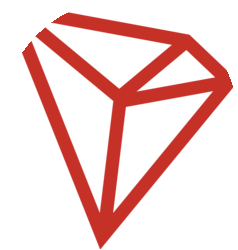- The recent developments surrounding the Tron DAO Reserve’s management of the USDD stablecoin have raised significant concerns within the cryptocurrency community.
- This move, involving the removal of approximately 12,000 Bitcoins—around $732 million—has sparked debates about the decentralization of the organization.
- While Tron founder Justin Sun asserts that the adjustments are routine, critics remain skeptical about the actual governance processes in place.
This article explores the implications of the Tron DAO Reserve’s Bitcoin removal from USDD’s backing, evaluating its stability and the broader concerns of decentralization in cryptocurrency.
Tron DAO Reserve’s Controversial Bitcoin Removal
On Wednesday, the Tron DAO Reserve, the governing body of the USDD stablecoin, executed a substantial change by removing roughly $732 million worth of Bitcoin from its collateral. This adjustment, which did not undergo a DAO vote, has led to questions regarding the degree of decentralization claimed by the Tron organization. Currently, USDD boasts a circulating supply exceeding $749 million, yet the majority of its backing has shifted to TRX, the native cryptocurrency of the Tron blockchain, which has a reputation for high volatility.
Concerns Over Governance and Decentralization
The lack of a formal voting process associated with this significant alteration raises red flags in the cryptocurrency community, especially given that the ethos of decentralized finance (DeFi) emphasizes community governance. While Justin Sun has justified the decision as a routine adjustment based on the collateral factor—a crucial metric indicating the proportion of backing assets relative to issued stablecoins—many critics fear this undermines the decentralized narrative that USDD promotes. Indeed, the only recorded vote pertaining to USDD governance was a May 2023 proposal concerning the use of TRX tokens, further exacerbating worries about inadequate democratic practices.
Historical Context: Transitioning to Overcollateralization
USDD’s development has not been without its complications. Originally, the stablecoin struggled with undercollateralization, where asset backing fell below the total value of USDD in circulation. This issue was particularly spotlighted following the collapse of Terra’s undercollateralized stablecoin, TerraUSD, which prompted USDD to pivot towards an overcollateralized model. In the wake of this transition, the Tron DAO committed to a minimum collateral ratio of 130%. Nevertheless, these changes did not entail community votes—common practice in most DAOs—prompting further scrutiny from regulators and stakeholders alike.
The Critiques from Established Stablecoin Assessments
Assessments from authoritative institutions, such as the stablecoin rating agency Bluechip, have placed USDD under rigorous examination. Bluechip awarded USDD its lowest rating, vocalizing serious reservations regarding its structural integrity. Among the agency’s critiques, they highlight concerns over the Bitcoin backing that was reportedly claimed by Huobi exchange, challenging the legitimacy of USDD’s collateral claim. Furthermore, Bluechip described USDD’s short-term stability mechanisms as essentially ineffective, suggesting a need for immediately actionable solutions to bolster investor confidence.
Tron DAO’s Future Steps and Community Reassurance
In light of the criticisms and organizational changes, Justin Sun has communicated intentions for future reforms aimed at enhancing USDD’s market competitiveness and stability. He plans to introduce upgrades to refine the mechanisms behind USDD’s operations, drawing comparisons to established models like that of MakerDAO’s DAI. As Sun stated in his recent communications on social media, transparency and efficiency remain paramount in any upgrades the Tron DAO undertakes.
Conclusion
The recent withdrawal of Bitcoin backing from USDD by the Tron DAO Reserve has illuminated not only the challenges inherent in the management of algorithmic stablecoins but also the complexities surrounding the principles of decentralization within the sector. As the community awaits further clarification and potential upgrades from the Tron team, stakeholders should remain vigilant about the stability and governance structures that underpin their investments in cryptocurrency.
